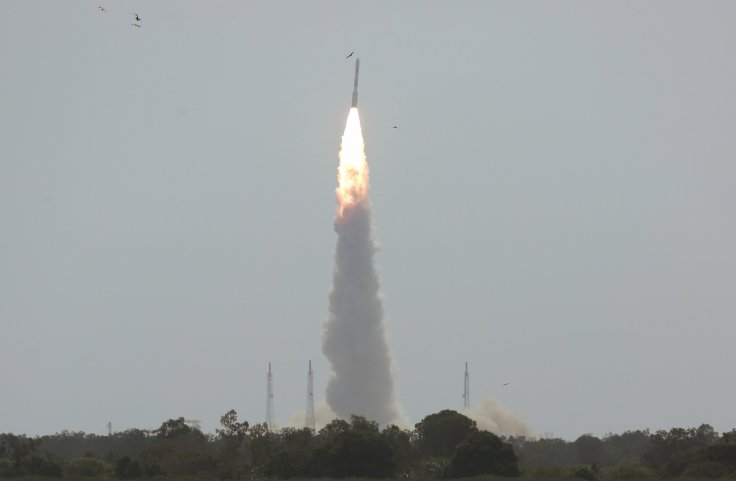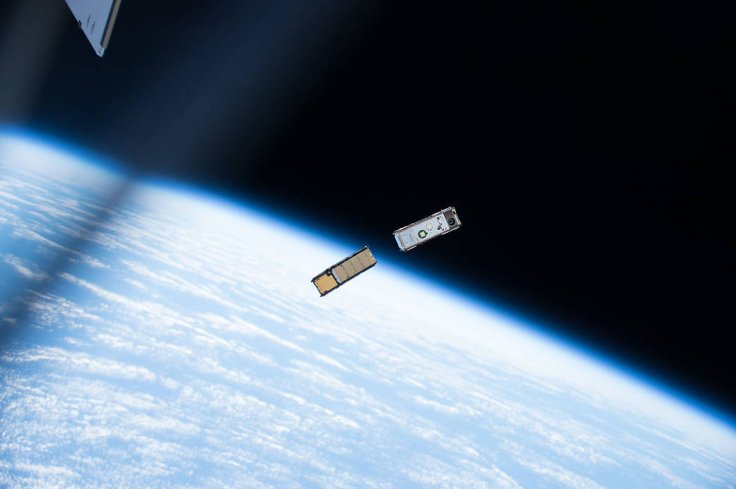
Indian Space Research Organisation (ISRO) is all set to launch its Cartosat 2F satellite, along with 30 other satellites, in its PSLV rocket on January 10, 2018. The launch is expected to set a new milestone for the development of nanosatellite technology.
Here is a list of major satellites, which would be launched during the mission are:
1. NovaSAR-S mission has been developed in partnership between the British government and Surrey Satellite Technology Ltd or SSTL. It has a Small Synthetic Aperture Radar (SAR), an S-band radar, which could monitor floods, assess agricultural crops, monitor forests (temperature and rainforest), land use, disaster management and maritime applications.
2. Microsat-TD is a small Indian earth observing satellite developed by ISRO. The data transmitted from it would create panchromatic imaging and infrared imaging and observe earth using lights of different colours or wavelength. It could map regions at around 3.2 km width.
3. Telesat is a system of two distinct communication satellites, which are developed by the SSTL and Space Systems Loral (SSL), a California company.
4. Carbonite 1 or CBNT 1 microsatellite has been developed by SSTL for testing earth observation capabilities, new rapid-building techniques, and several other new processes. The telescope could be disassembled and integrated into new special design framework in 5 days.
5. ICEYE has been designed as a group Synthetic Aperture Radar (SAR) of nanosatellites by ICEYE, a Finish startup Company. The equipment would provide near-real-time radar images along with several other microsatellites to provide images even through clouds, obscure weather, and darkness.

ALSO READ: ISRO's Jan 10 Cartosat satellite launch makes India superior in military applications
6. ISRO Nano Satellite 1C is a nanosatellite developed by the ISRO for a number of defence and commercial applications using MMX-TD (Miniature Multi-Spectral Imager - Technology Demonstrator) technology.
7. Planetary Resources' Arkyd 6A (A6A), which is built using CubeSat mechanisms, is meant to demonstrate nanosatellite technology. It will test the prospectus of Arkyd-100 satellite, which measures resources on water-rich asteroids. It uses mid-wave infrared imaging system to measure the temperature differences of objects and to acquire key data on the presence of water and water-bearing minerals in them. It will target earth during the trial version and later study near-earth asteroids.
8. Corvus-BC earth observation CubeSat(6U) has been developed by Canopus Systems, US. The satellite would capture daily multispectral imagery of the world's arable land. It would capture images in multispectral imaging systems in Red, Green and Near-Infrared spectrum of lights.
9. Lemur-2 satellites would function as a low-earth-orbiting satellite for meteorology and ship traffic tracking. The two payloads carrying satellite has been built by Spire technologies and solutions in India. While its STRATOS GPS radio will calculate temperature, pressure, and humidity on the planet, the SENSE AIS payloads will track ships and vessel movements.
10. PicSat consists of 3U-CubeSat satellite missions of France. It has been designed to measure exoplanetary transits when the planet Beta Pictor will travel in front of its star. The satellite uses several optical instruments for the study of stellar environments of the planet. The transit believed to occur within March 2018.

ALSO READ: ISRO all set to bring back its trademark launcher: Here's what you need to know about PSLV
11. The new Flock earth observing constellation satellites sent by PSLV would contain three CubeSats built by Planetary Labs, US. It would contain optical instruments to measure different spectral bands of light. These satellites would carry a telescope and a wide frame CCD camera with special filters.
While Flock-1 and Flock-1b constellations of the system consist of 28 satellites, each in inclined orbits, the Flock-1c constellation contains 11 satellites in their polar orbits.
12. NASA and Yonsei University in South Korea have collaborated to develop CANYVAL-X (CubeSat Astronomy using Vision Alignment eXperiment) mission. The mission aims to develop the possibility of a virtual telescope system using optical satellites, which could focus light from the sun and the detector satellite. Two separate CubeSats sent for the project would form a Vision Alignment System to make the virtual telescope a reality.
13. A solar sail experiment known as CNUSail 1 has been developed by the Chungam National University, South Korea, for deploying a solar sail in Low Earth Orbit (LEO) to perform de-orbiting of satellites using the sail membrane.
14. The 3U CubeSat named as KAUSAT 5 (Korea Aviation University Satellite) has been developed by the Space Research Laboratory of the South Korean University. It would observe the earth using IR camera and measure the amount of radiation around LEO. The payloads of the mission include infrared imaging and Geiger Muller Tube for sensing radiations.
15. South Korea has developed SIGMA (Scientific CubeSat with Instruments for Global magnetic field and rAdiation) or KHUSAT 3 (Kyung Hee University Satellite) 3U CubeSats to measure global magnetic field and radiation. The payloads for the mission would include TEPC- Radiation Detector and Magnetometer on a deployable boom.

ALSO READ: Chandrayaan-2 all set for launch in 1st quarter of 2018
16. STEP Cube Lab (Space Technology Experimental Projecet Cubesat Laboratory) is a IU CubeSat, which has been developed by Chosun University, Gwangju, South Korea to determine the effectiveness of technologies by investigating mission data obtained from on-orbit operation of the cube satellite. It would also study fundamental space technologies researched by domestic Universities to identify the effectiveness of the technologies.
17. Radio amateur and technology research CubeSat Fox-1D has been developed by AMSAT for hosting communication relay for amateurs around the world through onboard FM repeater system.
The communication and experiment mission would run repeatedly using FM analog voic, Frequency-Shift Keying data, Ultra High-Frequency modulations and L-band data uplinks.
18. Irvine 01 1U CubeSat has been developed by a team of students from five high schools under the guidance of experts from different Universities and Industries. The mission aims to give high school students the experience of building, testing and controlling a nanosatellite to develop their interests and talents in the engineering field.









